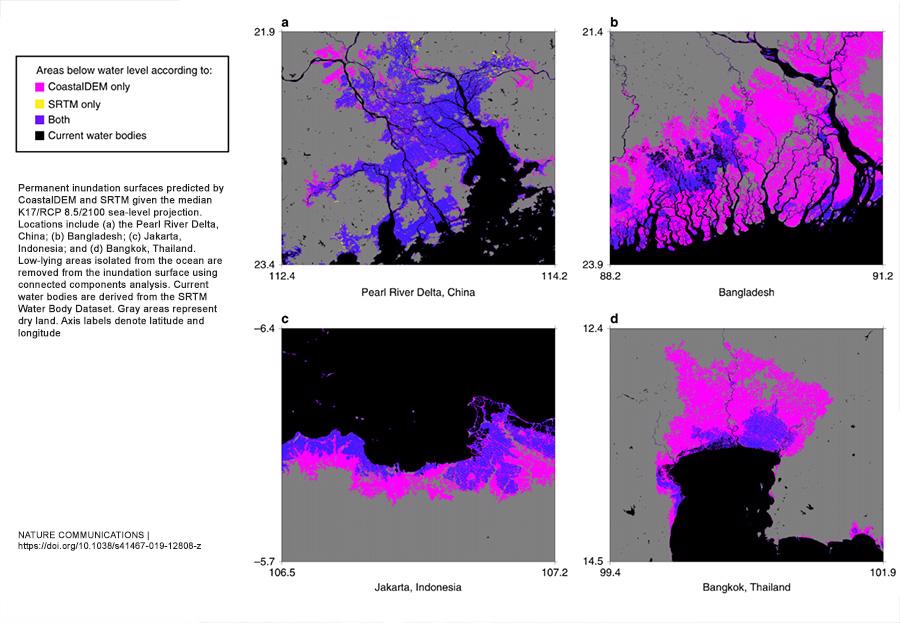New study shows rising sea levels to submerge more coastal cities than previously projected; threat posed is more than environmental
Calculating land elevation based on satellite readings, new data shows that 110 million people already live in places that are below the high tide line, or the line which resulted from protective measures like seawalls and other barriers.
Benjamin Strauss, Climate Central’s chief executive, emphasizes that cities that will be affected must invest vastly greater sums in such defenses, and that they must do it quickly.
Such physical defense measures should be done alongside the planning of the movement of a great number of peope internally, as emphasized by Dina Ionesco of the International Organization for Migration, an intergovernmental group that coordinates action on migrants and development.
Such movement of people could trigger or exacerbate regional conflicts citing the case of Basra, the second-largest city in Iraq, the effects of which is expected to be felt beyond its border.
John Castellaw, a retired Marine Corps lieutenant general warns that the climate change is more than an environmental problem. “It’s a humanitarian, security and possibly military problem too.”
Read the New York Times article (published 29.10.2019) and/or the Nature Communications article.



